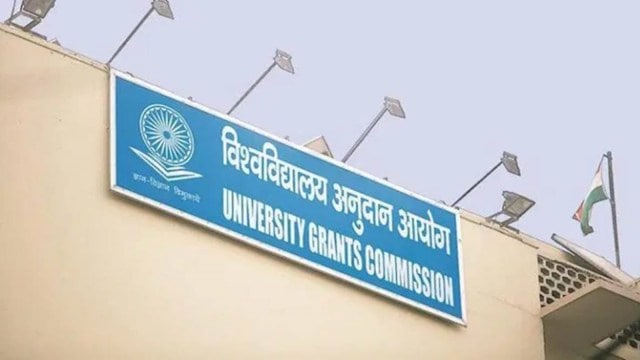
Written by Mahan Mj
M Jagadesh Kumar’s article, “UGC’s draft curriculum pairs contemporary Mathematics with civilisational literacy” (IE, September 26), defending the UGC’s Learning Outcomes-based Curriculum Framework (LOCF) for Mathematics, has factual inaccuracies and misleading statements. It fails to take cognisance of the principal thrust of the arguments that a petition signed by more than 900 academics, mostly mathematics teachers and researchers, has put forward.
As a practising mathematician, these are the things that come to my mind:
i. Core mathematics consists of Algebra, Analysis, Geometry, and Applied Mathematics.
ii. Electives need to be classified under different heads: Those for mathematics per se, those for physical sciences, those for humanities, notably Economics, those for Data Science, computer science, etc.
Iii. A historical perspective needs to be integrated into the curriculum as a logical development of ideas
However, the UGC LOCF fails on all three counts. By assigning a smaller number of courses to the core areas, it shortchanges algebra, analysis, and applied mathematics. Kumar remarks, “Nothing in the framework prevents giving attention to calculus and linear algebra, real and complex analysis, algebra through group and ring theory, probability and statistics with modern inference, numerical methods, and electives in optimisation, graph theory, or machine learning.” However, any model curriculum needs to recognise these as core areas and must not leave it to the discretion of individual higher-education institutions.
Second, electives are not well-thought-through. Instead of having courses like “Mathematics in XYZ”, it would be wiser to identify courses in allied disciplines that could be taken as electives by mathematics students. For example, instead of “Mathematics in Physics”, a mathematics student could choose one or more of classical mechanics, electrodynamics, relativity, quantum mechanics offered in Physics as electives. Conversely, electives in mathematics that could be offered to students in allied disciplines need to be identified by faculty in those disciplines.
Third, it is abundantly clear from the UGC LOCF that the courses with a historical perspective have been designed in a vacuum without, for instance, consulting the groups that are performing the same exercise at a school level. The mathematical content of almost all the historical or Bharatiya courses in the UGC LOCF goes back at least 500 years, and sometimes considerably more. The rewritten school books and syllabus take care of almost all the notable contributions that came from India up to about 1600 CE. Now, attention is being paid to integrate these developments with a modern perspective on topics such as calculus, trigonometry, and geometry (including the Sulva sutras and Baudhayana’s contributions). Thirteen out of the 14 Value Added Courses are thus ill-placed in an undergraduate syllabus meant for college students. The right place to incorporate these elements is in school, as the mathematical content is elementary enough. And this is already being done.
Only one course (on Ramanujan) in the VAC basket potentially deals with modern (20th-century) mathematics. The depth and fundamental nature of Ramanujan’s contributions can be appreciated only after one has mastered some number theory and analysis, particularly complex analysis. It would thus be wiser to incorporate Ramanujan’s contributions in courses in number theory where they rightfully belong. But such courses are lacking in the UGC LOCF.
There are several other issues that Kumar’s article cleverly sidesteps by making a couple of facile remarks, like: “Isolated errors in a few references can be fixed through public consultation without invalidating the framework”. We suspect the error here refers to the following “non-existent” books cited as references: The Geometry of Meditation by Mirabai Starr (2018), Fractals and Meditation by Christopher Hobbs (2019), Mathematics for Physics by Walter Rudin (2018), and Sustainable Mathematics by Glenn Ledder.
The kindest remark that one can make about these references is that they are, very likely, AI/ChatGPT-generated. To put forward such content without even cross-checking is shoddy practice, to say the least. Further, Kumar writes, “Analytical geometry and mechanics are essential in spatial reasoning and continuum models used in robotics, geospatial work, and structural design.” Kumar seems to be unaware that much of the necessary analytical geometry is already part of the Class XI syllabus. There can be a “pre-calculus” bridge course if necessary, not limited to analytical geometry.
The complaint about “Mechanics” in the signed petition was about more than a century-old textbook by S L Loney, a colonial legacy, that has been recommended in the UGC LOCF. The mechanics course has more of a flavour of an engineering course, with Lagrangian and Hamiltonian mechanics missing. One must object to such a course being declared a core course.
Finally, Kumar is simply wrong in saying that Mathematics in Music comes after core courses. It is in the very first semester. This comment was presumably in response to the objection raised in the petition that the course needs Fourier Analysis and Stochastic Processes as prerequisites.
To conclude, a complete withdrawal and redesigning of this so-called model curriculum is a duty to India’s biggest asset: Its youth.
The writer teaches at School of Mathematics, TIFR